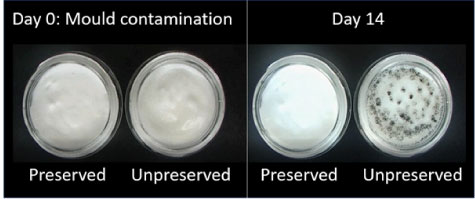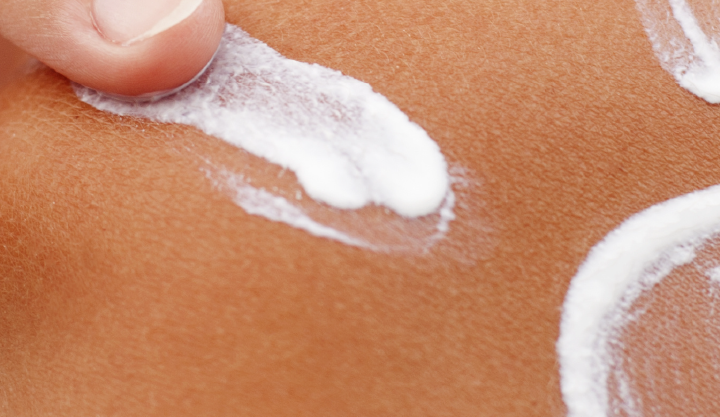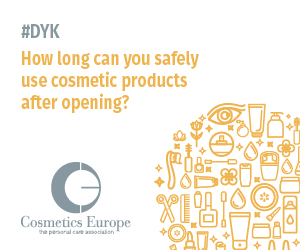Consumer safety is the overriding objective for the manufacture and sale of cosmetic and personal care products in Europe - and the foremost responsibility for product safety lies with industry.
The EU Cosmetics Regulation governs how cosmetics and personal care products are made and placed on the market. It is the most comprehensive set of laws for our industry in the world, requiring cosmetics to be safe for human health when applied under normal or reasonably foreseeable conditions of use.
To meet its obligations under the Regulation, our industry must fulfil the following duties before placing a product on the market:
- Run a highly comprehensive safety assessment
- Provide detailed product information
- Comply with ingredient and labeling rules
Read more on how we take action to ensure safety.
Ensuring safety: hazard vs. risk
The words hazard and risk are often used interchangeably but they are actually very different and it is important that the terms are used correctly. A hazard is the intrinsic property of a substance, ‘thing’ or situation to cause harm. Risk is the likelihood that harm will actually occur.
This is important because it explains how one can use substances with hazardous properties safely. The substance itself may possess a toxic property but that does not make it poisonous. Salt, for example, is known to be toxic at high levels but consumption of a certain amount is essential for health and safe in those quantities. Knowing that a hazard does not present an unacceptable risk is determined by a risk assessment. Each one of us make risk assessments every day without realising it, for example every time we cross a road.
Importantly, nearly every substance has a hazardous property. Scientists formulating cosmetic products make sure that the exposure to ingredients and the way they are used within the product are safe by managing the risk. This is further checked by a qualified safety assessor who performs a ‘risk assessment’ on each and every product before it is placed on the market. This is known as a safety assessment.
For example, alcohol (ethanol) is hazardous, it can be toxic. We know that consuming large quantities is bad for health and can even prove fatal. Thus the hazard is toxicity. However, this is unlikely to be seen when alcohol is used in a fine fragrance, an after-shave product or a deodorant because the exposure is so low. Even water, drunk to excess, can be toxic yet no one would seriously consider prohibiting its use as a cosmetic ingredient just because it possesses the hazardous property of toxicity.
This is how safety assessors ensure cosmetics are safe for use even if some of the individual ingredients might possess hazardous properties when applied under very different and excessive circumstances.
How safety assessments are conducted
The Cosmetic Products Regulation (CPR) states clearly that the safety of a cosmetic product may be assessed based on a knowledge of its ingredients and their properties. To that end, there is a requirement to carry out and compile a safety report and conduct a safety assessment for each cosmetic product before it is placed on the market. The contents of that safety report are laid out in an annex to the CPR and the actual assessment must be carried out by a duly qualified professional in a personal capacity. In addition, products intended for children under 3 years of age must have a special, more detailed, assessment made.
Of course, once the product has been assessed and placed on the market, it is necessary to monitor its performance to further confirm its safety in the wider marketplace. Any adverse reactions or ‘undesirable effects’ as they are called in the CPR must be recorded and assessed. If the undesirable effect is judged to be serious, the competent authorities must be informed and further action may then be taken including product withdrawal if necessary. This situation is extremely rare and demonstrates the effectiveness of the system by which cosmetic safety is assured.
This is achieved without the need to test the finished product on animals and neither can ingredients be tested on animals to confirm their suitability. Instead, the cosmetics industry relies upon alternative methods of assessing the suitability of ingredients and through the use of historical data. Both animal testing and the marketing of products containing ingredients tested on animals are subject to strict bans as laid out in the CPR. Those bans apply no matter where in the world the animal testing took place.
See promoting science and research for further details on our work on alternatives to animal testing.
The safety assessor must be a professional who possesses the necessary qualifications, including competence in analysis, evaluation and interpretation of toxicological data. Furthermore, they must prove that they have access to the toxicological and analytical information relevant to the assessment, consider the product being assessed impartially, and are obliged to carry out the safety assessment based on a thorough analysis of all available data, conditions of exposure and appropriate consideration of weight of evidence.
Based on all the available data, the conclusion may be one of the following:
1. The product is safe for the proposed use without restrictions
2. The product is safe with restrictions and may need specific warnings or precautions (risk reduction measures)
3. The product is not safe and must not be placed on the market
The full details of the safety assessment procedure are available from the European Commission’s website.
Preservation of cosmetic products
Preservatives are important ingredients that are added to cosmetic products to keep them safe and effective. Making sure products are protected means that people can be confident that their cosmetic are protected against contamination by microorganisms during storage and continued uses.
Consumer safety is paramount and cosmetic products are formulated to prevent contamination by microorganisms. Bacteria, yeasts and moulds are always present on our skin and in the air around us. These can get into products during normal use. Without preservatives many products could spoil, reducing their effectiveness and leading potentially to problems such as skin or eye infections. Just as food can spoil, cosmetic and personal care products can deteriorate in the same way – especially as they are often stored in warm, humid environments, like bathrooms. Preservatives can prevent these problems by stopping microorganisms from multiplying in the product.
The picture bellow illustrates why preservatives are so important. You can see that an unpreserved pot of cream exposed to mould is strongly contaminated after 14 days, whereas a preserved one does not show any signs of contamination.
 Photos courtesy of CTPA
Photos courtesy of CTPA
Robust cosmetics safety legislation ensures that cosmetic products placed on the market are safe. Read more about the preservation of cosmetic products in Cosmetics Europe Fact Sheet.
The European Commission infographic emphasises the importance of preservatives for cosmetic products. Preservatives are used in cosmetic products all around the world and the International Cooperation on Cosmetics Regulation (ICCR) has also produced an infographic to highlight their importance.
Cosmetic products and allergies
An allergy is defined as an excessive reaction to substances in our environment that are harmless to the majority. Allergies in general are extremely common, affecting 1 in 3 people at some point in their lives. 15-20% of people suffer from hay fever, for instance; and 12% of all people are allergic to the nickel in coins!
People can even be allergic to commonly used products. The ingredients contained in them are not unsafe: the body can simply react to them differently, and this varies from person to person. Almost any substance, natural or man-made, can potentially produce an allergic reaction in someone.
Cosmetic products are subject to strict safety rules laid out in the EU Cosmetics Regulation. Safety assessments include allergy safety, which greatly minimises the risk of products causing adverse reactions.
Substances known to cause widespread allergic reactions are not used in cosmetics but each person is different and we might find we are allergic to substances that others use without any problems. It is not possible to avoid all substances in cosmetics that might cause an allergic reaction in someone any more than we could avoid all foods to which someone might be allergic. But when higher risk of allergy has been identified, such as with some hair dyes, the product will carry a warning label and users will be advised to carry out an allergy alert test before applying the product in full.
Read more about how we take action to ensure safety.






